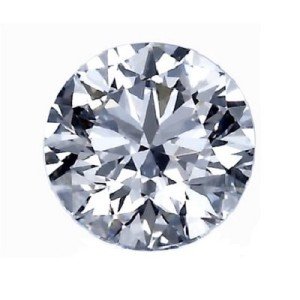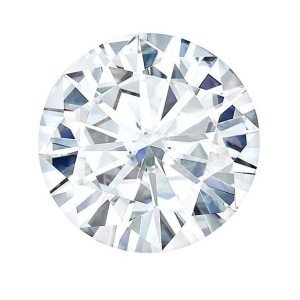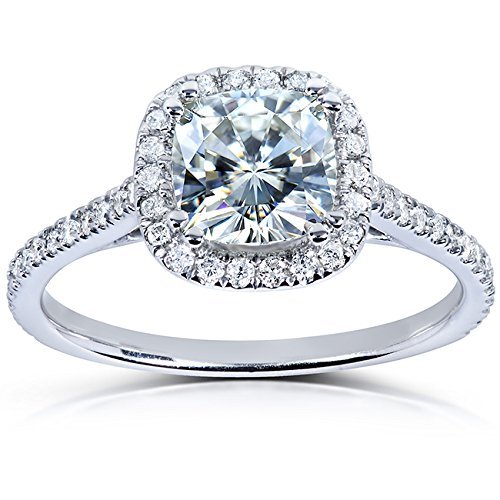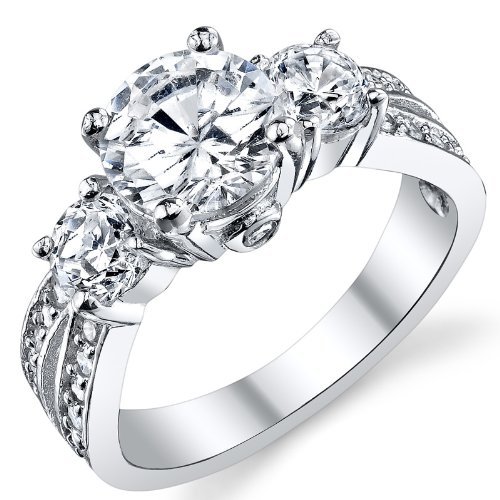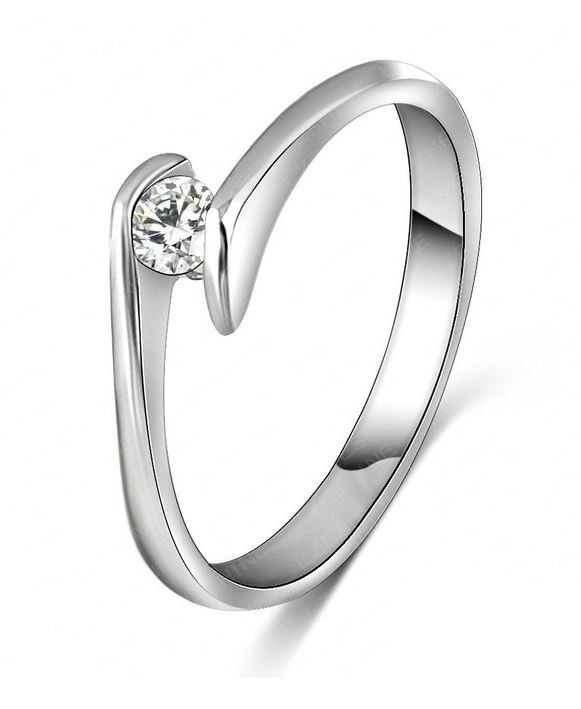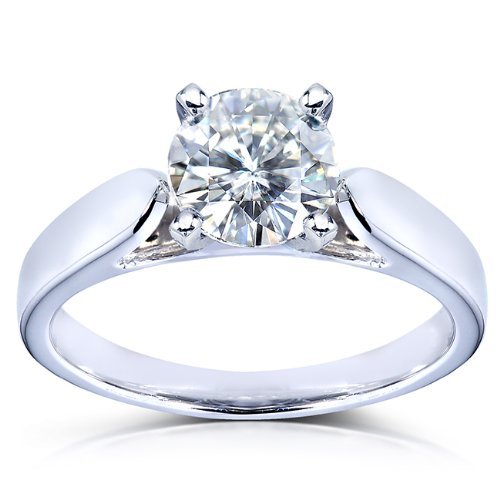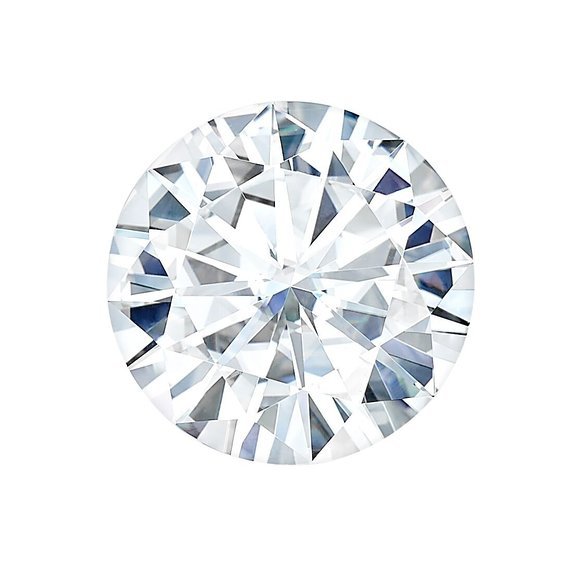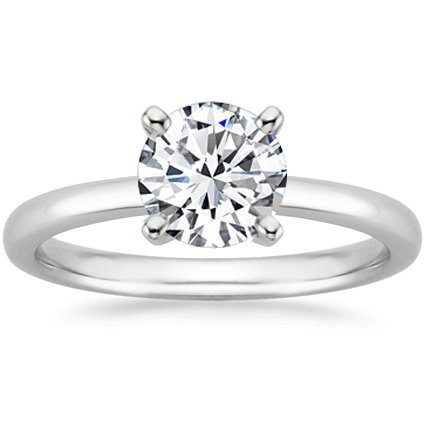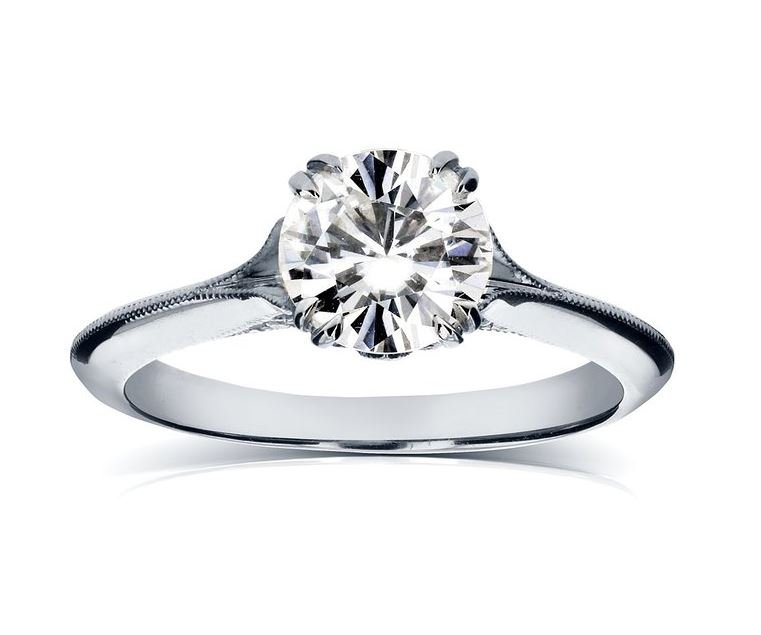Can You Tell The Difference Between Moissanite and Diamond

Moissanite is a diamond alternative that is durable, brilliant and is priced well below natural diamonds. Of course, when looking for quality, most people believe that diamond is the only choice. The truth is, though, that because of advances in gem production, moissanite is now a viable rival to diamonds. However, the question still remains in the mind of smart shoppers, “can you tell the difference between moissanite and diamond?” In this post, we answer this and other relevant questions for those seriously considering non-diamond stones.
A Brief History of Moissanite
Moissanite was first discovered by Henry Moissan in 1893, as he studied the crater made by a meteorite. Moissanite is very rare in nature, but has come to be manufactured as a precious gem that not only resembles the best qualities of diamonds, but also surpasses them in brilliance or “sparkle” effect. Moissanite is not a diamond substitute–it has its own composition and is a gem in its own right.
In the late 1990’s, Charles and Colvard® patented the process of creating high quality moissanite stones. These stones take several months to produce and are hand-cut and crafted by expert jewelers. Because of this, each Charles & Colvard Moissanite® stone carries a limited lifetime warranty and a certificate of authenticity.
What is Moissanite Worth
Moissanite is priced based on size and color content. Diamonds, however, are measured by cut, clarity, size, and color. Because moissanite is made under the strictest standards, the cut and clarity are consistent. Also, because moissanite is roughly 10% lighter than diamond, it is measured in millimeters instead of carat weight. For example, a 6.5mm round moissanite stone would be similar to a 1 carat diamond, but would be .88 carats in weight.
The next feature that determines the price of a moissanite gem is its color content. Charles & Colvard® have developed three tiers of moissanite that range from a hint of color to colorless. The Forever Classic™ stone will have a hint of color and would be in the J-K category of the gem color scale. The Forever Brilliant® is near colorless and is in the G-I-H range. The newest moissanite developed by Charles and Colvard is the Forever One™. This is the most expensive since it is colorless in the D-E-F range.
For price comparison, here are some examples of loose moissanite stones. At the time of this writing, a 1 carat (6.5mm) Forever Classic™ round stone is listed for $255.00 (USD). A Forever Brilliant® stone of the same size is $330.00 (USD), and a Forever One™ is $475.00 (USD).
In contrast, the 1.04 ct round loose diamond stone with G color and VVSI clarity shown above is listed at $11,350.00 (USD). This stone is comparable to the Forever One™ moissanite listed above.
Can You Tell The Difference Between Moissanite and Diamond
Can moissanite pass as a diamond? The answer to this questions is “yes” and “no.” To the naked eye, you cannot tell the difference between the two. Moissanite will have more brilliance (sparkle) than a diamond, though. Also, under a thermal diamond tester, moissanite cannot be distinguished from a natural diamond.
The larger the moissanite stone, the easier it is to tell that it is different from a diamond, but to the average person, it will look like a diamond. Also, there are testers designed specifically to determine if a stone is moissanite. Moissanite will have needle-like inclusions perpendicular to the tablet facet that are visible under a loupe magnification of 10x. Inclusions are normal in all types of stones.
Charles and Colvard Forever Brilliant® and Forever One™ stones will be engraved at the girdle for authenticity, and this can be seen by a jeweler under a loupe. Other things to look for to differentiate between moissanite and diamond is moissanite’s gravity and refractive indices and if magnification can show doubling of facet junctions.
Conclusion
As you can see, moissanite is so like a diamond that the difference can only be seen by specific testers and by looking for moissanite-specific features. If you are considering a moissanite ring or stone, know that it is an excellent choice. However, be sure that it is certified and has a lifetime warranty.
For more information on moissanite and how it compares to diamond, be sure to read our article Difference Between Moissanite Diamonds. To see pricing for different cuts of moissanite stones, be sure to read our post Moissanite Diamond Prince List. We also review and list several types of moissanite rings in our articles Moissanite Engagement Rings Review, Emerald Cut Moissanite Engagement Rings, Antique Moissanite Engagement Rings, Cheap Moissanite Engagement Rings, and several others listed on our side menu. Be sure to leave us any questions or comments on our Contact Us page.

